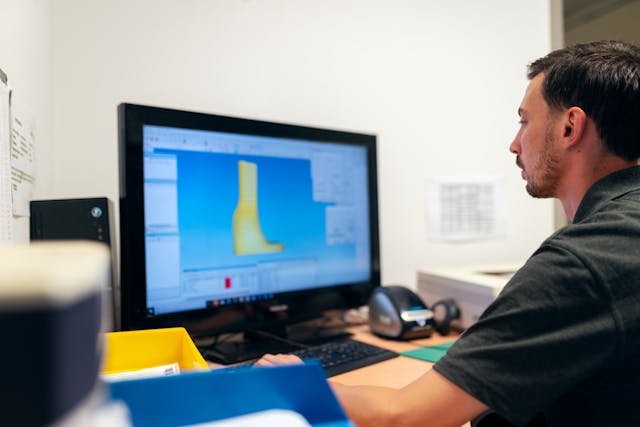Injuries to the brachial plexus can deeply affect a person’s life. These nerve injuries impact how the shoulder, arm, and hand move and feel. For many, this leads to weakness, partial paralysis, or even complete loss of function in the upper limb. But thanks to new research and smarter technology, people now have more choices than ever. The year 2024 has already brought major changes in how we look at prosthetics for brachial plexus injuries. From better sensors to wearable muscle systems, the future looks hopeful — and very human.
At Robobionics, we’re not just watching these changes happen — we’re part of them. With our experience in developing user-friendly, affordable prosthetics here in India, we’re working hard to make these advancements reach more people, faster. This article will guide you through the most exciting research updates and new tech in the field of brachial plexus prosthetics in 2024. Whether you’re a user, caregiver, or medical professional, these insights will help you understand where we’re heading and how it can change real lives.
Smarter Sensors and Better Control Systems
Technology that helps prosthetics “listen” to the body is getting better every day. In 2024, one of the biggest improvements in brachial plexus prosthetics comes from new sensor systems. These sensors are small, light, and more accurate than before. They help detect tiny signals from muscles, even in damaged areas. This means a person can move a prosthetic arm more naturally — with less effort and more control.
Researchers have worked hard on ways to pick up signals from nerves or muscles that are still alive but weak. By placing these improved sensors near the shoulder or upper arm, users can now control their prosthetic hand or elbow with smoother movements. These systems no longer need strong muscle contractions. Even small signals can trigger movement, which makes it easier for people with nerve damage to adapt quickly. The result? More comfort, more control, and less frustration.
At Robobionics, we’ve started integrating advanced sensor systems into our upcoming models. These sensors adjust to each user’s needs and respond with high accuracy. It’s a big step toward making prosthetics feel less robotic and more human. If you’re curious how these sensors might work for you, book a free consultation today and let us show you what’s new in real-time prosthetic control.
AI and Machine Learning in Prosthetics
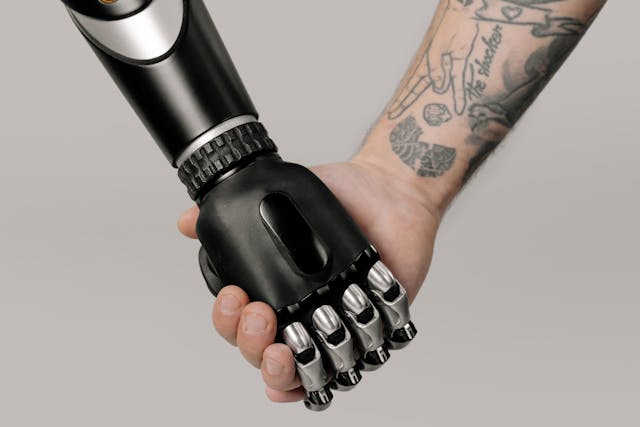
Artificial Intelligence is no longer just a buzzword. In 2024, AI is helping prosthetics become smarter every day. With machine learning, a prosthetic arm can now learn how the user moves and even predict their next action. This kind of tech is being used to make prosthetic devices respond faster and feel more natural in daily use.
For users with brachial plexus injuries, AI can fill the gap between weak signals and real-world tasks. If your body sends a signal to move your hand, the AI-powered system can understand what you’re trying to do — even if the signal is not strong or perfect. It improves over time, getting used to your habits and making the experience smoother. It’s like the prosthetic is learning from you, not just waiting for instructions.
Robobionics is working on AI-enabled software for future versions of our Grippy™ bionic hand. These systems will adjust grip strength, switch grip patterns, and reduce delays — all based on how you move. We’re testing early versions with users in India, and the feedback is very promising. If you’re ready for a smarter way to control your prosthetic, join our pilot program and be part of the future of human-centered technology.
New Interfaces for Brain and Nerve Signals
Another exciting area of research in 2024 is neural interfaces. These are devices that connect directly with the brain or nerves. They help users send commands to their prosthetic without using muscles. While this idea sounds futuristic, real progress has been made this year. Some labs are already testing systems that can pick up brain signals through the skin or soft implants.
For brachial plexus injury cases where muscle signals are too weak or missing, brain-controlled prosthetics offer new hope. Users can think about moving their hand, and the device responds. These systems still need training and calibration, but the results are exciting. It gives back control to people who once thought they had no options left.
At Robobionics, we are closely watching this field and working with research partners to explore simpler ways to make neural control affordable in India. We believe this could change everything for high-level injuries. Stay in touch with us for updates as we bring new research closer to everyday use.
Advanced Materials and Lightweight Design
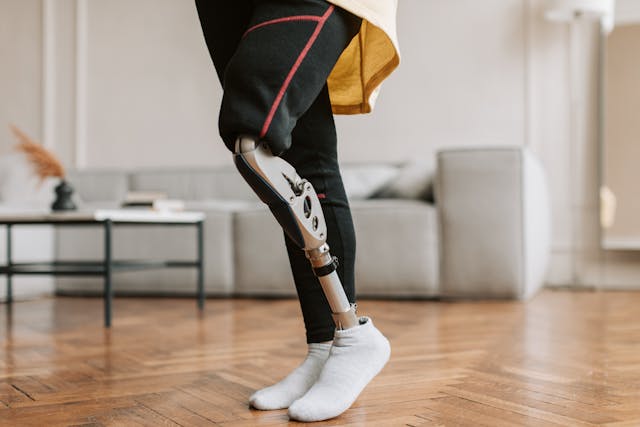
Another major shift in 2024 is in how prosthetics are made. Materials are getting lighter, stronger, and more flexible. This is especially important for brachial plexus users who may still have some function but need extra support. A heavy device can make movement harder. That’s why the new focus is on materials that offer full function without weighing down the user.
Modern 3D-printing methods are now being used to build prosthetic arms that are custom-shaped to each person’s body. These devices feel more balanced, look more natural, and can be worn for longer without discomfort. These materials are not just light — they’re also tough. They can handle daily wear and tear, even in rough work conditions, without breaking down.
At Robobionics, we use 3D-printing to create the Grippy™ bionic hand and other custom-fit solutions. In 2024, we’ve added newer materials like carbon-reinforced polymers that are even stronger and lighter than before. This allows users to do more — from work tasks to hobbies — without feeling limited. Book a fitting session with our team to experience the difference a lighter, better-fit prosthetic can make.
Soft Robotics and Flexible Joints
Soft robotics is a new field that’s getting a lot of attention this year. Instead of hard motors and stiff joints, soft robotic parts use air, liquid, or flexible materials to create natural movement. These systems feel more like human muscles. For someone recovering from a brachial plexus injury, this means a prosthetic that moves with their body, not against it.
One example is flexible elbow joints that use lightweight bands to help users bend and straighten their arm more naturally. These joints don’t require much power and respond well to small movements. This can be a game-changer for users with partial control of their upper limb. It also makes training and rehab easier since the movement feels less mechanical and more human.
Robobionics is exploring soft robotic features for our future prosthetic arms. We’re testing low-pressure actuators that offer smoother elbow movement without heavy motors. These systems are designed for both active and passive use. Reach out to our R&D team if you’d like to try our early prototypes or take part in our testing programs.
Sustainable and Skin-Friendly Innovations

Comfort is just as important as technology. In 2024, new materials have made prosthetics more skin-friendly than ever. Soft liners, breathable fabrics, and sweat-resistant coatings help users wear their devices longer without discomfort. This is especially useful in Indian climates, where heat and humidity can affect daily wear.
Sustainability is also a growing part of prosthetic design. Recycled plastics and biodegradable parts are being tested around the world to create eco-friendly solutions. These materials reduce waste without sacrificing strength or safety. For users, this means fewer replacements and a lower carbon footprint.
Robobionics takes both comfort and sustainability seriously. All our devices use non-toxic materials and recyclable parts whenever possible. We also provide custom liners that match different skin types. If you’ve had skin issues or allergies with past devices, try our new-generation sockets and experience long-term comfort in every wear.
Personalized Rehabilitation and Virtual Training
Prosthetic technology doesn’t work alone — it needs smart rehab to go with it. In 2024, more attention is being given to how users train with their devices. Rehab is not just a clinic-based task anymore. Now, thanks to virtual tools and gamified systems, training can happen at home in a way that’s engaging and effective.
Gamified Rehab Systems for Faster Learning
Learning to use a new prosthetic can be slow and tiring. That’s why 2024 has brought a fresh wave of gamified rehab tools. These are simple, app-based games that teach movement and build strength in a fun way. They track progress, give rewards, and motivate users to keep practicing.
For brachial plexus users, these tools are especially helpful because they focus on small, repeat movements that help reconnect the brain to the limb. Whether you’re learning to open a prosthetic hand or raise your elbow, the games give real-time feedback. This helps build muscle memory faster.
Robobionics offers its own gamified home rehab program for Grippy™ users. This includes mobile games designed by physiotherapists and engineers. It’s fun, simple, and works even for users with low energy levels. Contact us today to get a demo and see how easy rehab can be from the comfort of your home.
Telehealth and Remote Adjustments
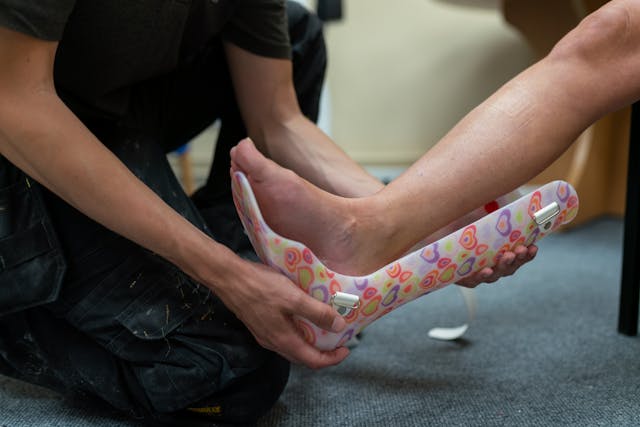
One of the best tech updates this year is how prosthetic care can now happen remotely. Many devices in 2024 are built with Bluetooth or Wi-Fi features that allow professionals to adjust settings from a distance. This saves travel time, makes care faster, and allows for real-time feedback.
If a user is feeling discomfort or wants to change grip settings, they don’t need to visit a clinic every time. With secure remote access, the support team can guide them through small fixes or updates. This is very helpful for people living in rural areas or those with mobility issues.
At Robobionics, we’re using remote care tools to check in with users and fine-tune devices as needed. It’s part of our mission to offer faster, more accessible support across India. Join our remote care program and get expert help without leaving your home.
Tailored Rehab Based on Injury Type
In 2024, rehab is no longer “one-size-fits-all.” Today, new research has made it possible to create rehab programs that are based on the exact type and level of nerve injury. Whether the damage is at the root or mid-level of the brachial plexus, rehab now changes based on how much strength or feeling you have left.
Therapists and prosthetic experts are using this data to create custom plans that include stretching, movement, and even mental training. The goal is to build not just physical strength but also confidence in using the prosthetic. Rehab is now a personal, step-by-step journey.
Robobionics works closely with rehab specialists to make sure each user has the right plan for their recovery. We believe that the right training can make any prosthetic feel like a natural part of you. Get in touch today to start your own tailored recovery path with our expert team.
Clinical Trials, Collaborations, and Global Impact
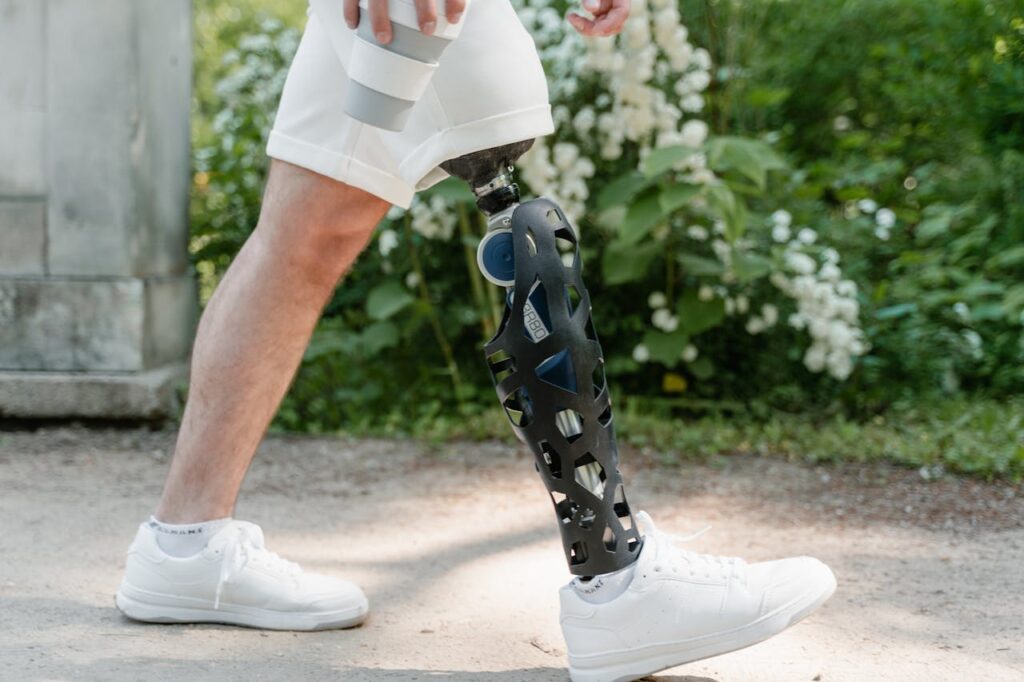
Behind every new prosthetic innovation is years of testing, teamwork, and clinical proof. In 2024, the progress we see in brachial plexus prosthetics is not just happening in labs — it’s being shaped by real users, global collaborations, and hands-on clinical studies. This kind of work ensures that the technology being developed is safe, useful, and truly meets people’s needs. It also helps bring high-quality solutions to more places around the world, especially in countries like India, where affordable care is just as important as advanced technology.
Robobionics is proud to play a key role in this journey, working with hospitals, universities, and research labs to develop better products and reach more people. These partnerships help us test new designs, gather real-life feedback, and fine-tune solutions that are both smart and practical. In this section, we explore how clinical trials, joint research, and international collaboration are shaping the future of prosthetics for brachial plexus injuries.
Ongoing Clinical Trials and User Testing
Clinical trials are one of the most important steps in bringing a new prosthetic device to the market. These studies help us understand how well a device performs in real-world settings and whether it truly helps users regain function. In 2024, several clinical trials across India and abroad are focused on evaluating new sensor systems, lightweight designs, and AI-powered prosthetic arms.
What’s exciting is that many of these studies include users with brachial plexus injuries specifically. Researchers are testing how well different devices respond to weak or partial signals, and how long users can comfortably wear their prosthetics during daily tasks. The results are showing real promise, especially in terms of smoother control and faster adaptation times.
At Robobionics, we conduct live user trials for every new product we launch. Whether it’s a new joint mechanism or an updated socket design, we collect direct feedback from users at every step. This helps us improve faster and ensure each product is built for real people with real needs. Want to take part in our next user trial? Contact us today and help shape the future of prosthetics.
Collaborations with Hospitals and Universities
2024 has been a year of partnerships in prosthetic development. Research is no longer done in isolation. Universities, medical colleges, and hospitals are working together with prosthetic companies like Robobionics to build solutions that are backed by science and guided by user experience. These collaborations are key in making sure new devices are not only innovative but also clinically approved and ready for everyday use.
In India, we’ve seen major institutions like IITs, AIIMS, and top private hospitals coming together to study limb loss and nerve injury in more detail. These studies help identify common pain points, test new materials, and explore better rehab programs. They also open the door for new tech to be developed locally, which makes it faster and more affordable for Indian users.
Robobionics works closely with these institutions to co-develop smart, practical devices. From lab testing to hospital trials, our products are built in partnership with experts in biomechanics, neurology, and physiotherapy. If you’re a medical professional or researcher looking to collaborate, reach out to our R&D team — we’re always open to meaningful partnerships that drive better outcomes.
Global Reach and Impact in Emerging Markets
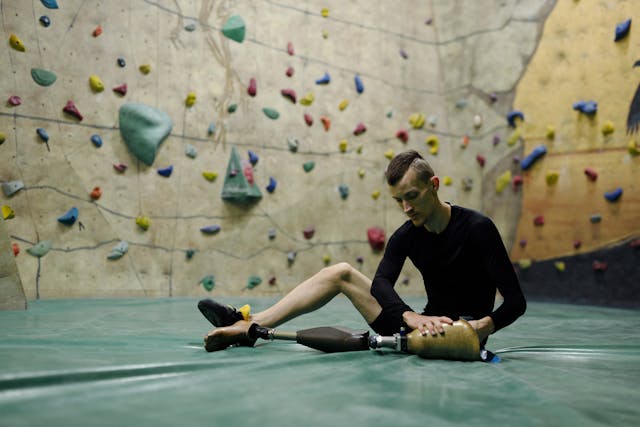
While a lot of cutting-edge prosthetic work happens in large research centers, the real impact is felt when that technology reaches people in smaller towns, rural areas, and underserved communities. In 2024, more companies are realizing the importance of building affordable solutions that can work anywhere — not just in high-tech labs. This has helped push innovation toward accessibility, not just performance.
Robobionics, as a proudly Made-in-India company, is focused on making world-class prosthetics available to users across the country. With distribution partners, rehab centers like Omnify Prosthetics, and local service teams, we bring these solutions directly to users who need them most — faster and at lower cost. Our goal is to reduce the waiting time, remove import barriers, and offer local repair and training support wherever possible.
This approach is gaining global attention. In fact, several NGOs and international organizations are now partnering with Robobionics to deploy affordable bionic hands and adaptive wearables in Africa, Southeast Asia, and parts of the Middle East. It shows that when innovation is rooted in empathy and real-world need, it doesn’t just change individual lives — it changes entire communities. Want to support or partner in global outreach? Get in touch with us and let’s make a wider impact together.
Conclusion: A Hopeful Future Starts Now
The world of brachial plexus prosthetics has changed more in the past few years than it did in the last few decades. With smarter sensors, lighter materials, AI systems, and better rehab tools, users now have more control, comfort, and confidence than ever before. These breakthroughs aren’t just for tomorrow — they’re already helping people today.
At Robobionics, we’re proud to lead this change from right here in India. We believe that everyone — no matter their location or background — deserves access to the best technology and care. That’s why we focus on local manufacturing, personalized service, and continuous innovation. From Grippy™ to our adaptive wearables and remote rehab, everything we build is designed to restore independence with dignity.
Ready to explore the latest in prosthetic technology for brachial plexus injuries? Book your free consultation, demo, or trial with Robobionics today. Let us help you discover what’s possible — and take the first confident step into your new chapter.



